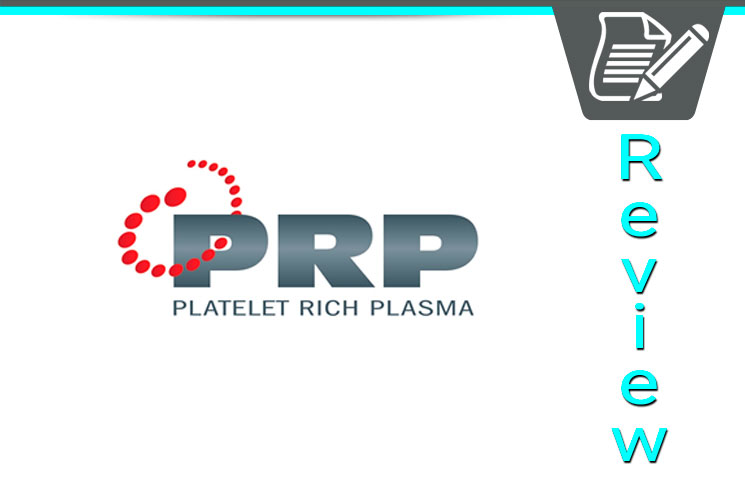Platelet Rich Plasma Guide
Platelet Rich Plasma is a unique formula used to treat sprained knees and tendon injuries. The treatment was made popular by famous athletes like Tiger Woods and Rafael Nadal. Here’s our guide to using Platelet Rich Plasma.
What is Platelet Rich Plasma?
Platelet rich plasma, also known as PRP, is a healing formula made from your own blood. That formula has been extensively publicized in recent years for its ability to heal sprained joints and sore tendons.
PRP has received major endorsements from famous athletes like Tiger Woods and Rafael Nadal, among others. Other athletes have credited PRP with helping them return to competition more quickly.
So what exactly is platelet rich plasma? Well, our blood is mainly a liquid known as plasma. That plasma also contains certain compounds like red cells, white cells, and platelets. All of these compounds play a critical role throughout the body.
Platelets, however, play a particularly important role when healing injuries. We best know platelets for their ability to clot blood – like when we receive a cut. But platelets are also rich with hundreds of different proteins called growth factors. Growth factors play a critical role in the healing of injuries.
By filling our body with platelet rich plasma, we may be able to kickstart our body’s natural healing processes.
Platelet rich plasma has 5 to 10 times higher concentrations of platelets compared to ordinary plasma.
How is Platelet Rich Plasma Made?
To make platelet rich plasma, a specialist must first draw blood from the patient. Then, the specialist separates platelets from other compounds in the blood. Using centrifugation, the specialist then increases the concentration of platelets. Finally, the plasma with the higher concentration of platelets is combined with the remaining blood.
In layman’s terms, platelet rich plasma is made using your own blood. That blood goes through a special process that concentrates the most valuable components – called platelets – so it can be re-added to your body for its healing powers.
How Does Platelet Rich Plasma Work?
After creating platelet rich plasma, that blood is carefully injected into the injured area of your body.
At this point, scientists aren’t entirely sure how platelet rich plasma works – or even if it works better than ordinary blood. The procedure is still relatively new and more research needs to be performed to determine exactly how it works.
Nevertheless, platelet rich plasma is thought to work by directly putting platelets where they need to go in the body. The platelets are immediately used by your body to boost the healing process.
PRP can be used to heal an injury like Achilles tendonitis, for example. Achilles tendonitis causes the heel cord to become swollen, inflamed, and painful. Using PRP and local anesthetic, a specialist will inject the solution directly into the inflamed tissue. Typically, this increases pain in the region for a few weeks after the initial injection. In the long run, however, the patient experiences a reduction in pain and faster healing from injury.
PRP can also be prepared in a special way that lets it be stitched into torn tissues. This is useful for treating injuries where the tendon is severely torn or separated – for example, torn heel cords that require surgery. By stitching PRP into these wounds, physicians may be able to expedite the healing process.
Which Conditions Can Be Treated with PRP?
PRP can be used to treat a variety of injuries. As mentioned above, more studies need to be performed to determine which procedures work best with PRP. Factors that influence the effectiveness of platelet rich plasma treatment include:
— The Area Of The Body Being Treated
— The Overall Health Of The Patient
— Whether The Injury Is Acute (like when you cut yourself) or Chronic (an injury that developed over a longer period of time)
Today, PRP has proven to be particularly effective at treating:
— Chronic Tendon Injuries (knee and elbow injuries are particularly popular)
— Acute Ligament And Muscle Injuries
— Post-Surgery Healing (especially tissue surgeries)
— Knee Arthritis
— Fractures
A few types of treatments are more popular than others, including osteoarthritis of the knee, shoulder, hip, and spine, as well rotator cuff tears, chronic plantar fasciitis, ACL injuries, pelvic pain and instability, back and neck injuries, tennis elbow, ankle sprains, tendinitis, and ligament sprains.
How to Undergo Platelet Rich Plasma Treatment
Platelet rich plasma treatment is now being offered at clinics around the world. With a quick Google search, you should be able to find a clinic or facility in your area offering treatment.
PRP procedures typically take 2-3 hours, which includes preparation and recovery time. PRP treatments are performed safely in medical offices. The procedure is completed without the risk of surgery, general anesthesia, or lengthy hospital stays.
Procedures are also not associated with long recovery times – one clinic claims that “most people return to their jobs or usual activities right after the procedure.”
The one “catch” with PRP treatment is that it needs to be performed multiple times. Up to three injections may be given within a six month timeframe. However, a large number of people will experience significant relief from their injuries soon after experiencing the first or second injection.
Within the first 2 weeks of PRP treatment, you should notice increased pain in the targeted part of your body. Between weeks 2 and 6, however, you should experience a gradual reduction of pain.
The History of PRP Treatment
PRP first began being researched in the 1970s. It wasn’t until 1987, however, that PRP was first used in surgery. PRP was used in an open heart surgery procedure in Italy in 1987.
After successfully being used in that procedure, PRP grew in popularity starting in the mid-1990s. Today, it’s been applied to a variety of medical fields, including cosmetic surgery, dentistry, sports medicine, and pain management.









